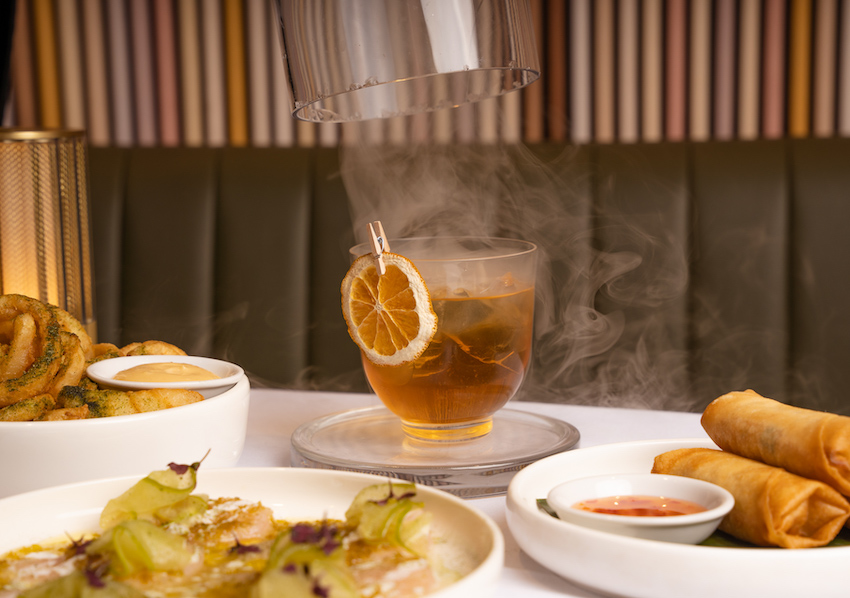
For the Sake of my Education
By Jackie McMillan
At a recent visit to try the food at Toko Restaurant and Bar, I was introduced to the pleasures of sake, by Bar Manager Paul Birtwistle. His did this in such an interesting and wonderful way, that I had to follow up with an interview. Paul is one of the world’s leading bartenders, with accolades like the Cape North Vodka Bartender of the Year 2006 and third place in the 42 Below Cocktail World Cup 2005 under his belt. He trained at Zuma Restaurant in London before migrating to Australia in 2007, and indulging his passion for Japanese food and beverages by taking the role of Australia’s first sake sommelier at Toko.
It is in this role that Paul introduced me to one of his favourite sakes – Sato No Homare (Pride of the Village) Kurogin, ‘brewed by the Sudo Honke brewery in the Ibaraki prefecture on the east coast of the main island.’ As I raised the glass of clear liquid to my nose, I was struck by both the aroma and his captivating description: ‘This sake has one of the most beautiful complex aromas I have ever come across with any beverage. Both light and fruity, smelling of violets, strawberries, hints of caramelised pineapple and even pear drops. Pleasingly light and refined on the palate, yet settled and deep, hints of aniseed spice that lead to a fantastically clean finish.’ For the first time, I began to see that sake could be more than a burn in the gullet to distract from the chill of winter.
My mind of course turned to the possibilities of food matching, and Paul was eager to oblige. He told me that this particular sake, being semi-dry, ‘works wonderfully with fish such as tuna (especially tuna belly) or even stronger, more oily fish such as yellowtail.’ The timely arrival of our sashimi proved him to be correct. Furthermore, he reminded me that ‘Japanese have been using sake in cooking for many centuries, and it is said to raise the level of umami within a dish.’ Umami is a subtle savoury taste (one of the five basic tastes along with sweet, sour, salty and bitter) linked to glutamic acid. It blends well with other tastes to expand and round out flavours, giving Japanese food (in particular) that extra something. Toko’s wonderful robata grilled duck is a heavier, more gamey dish, and I was curious as to what sort of sake would suit it’ Paul enticed us with a rich sake called Mitani Fujio Yamahai Junmai. As a basic rule of thumb, he suggests that you ‘drink light sake with light foods, and drink heavy sake with rich foods.’ Seems simple enough!
Food matching aside, if you’re more the type to be interested in the internally warming powers of sake, you should be looking for a Junmai sake. According to Paul, they ‘are the truest form of sake producing a robust flavour that can be drunk at anytime with a wide array of foods.’ He adds they’re ‘easy to drink, do not require much thought, and tend to please everybody.’ If the weather is particularly cold, you can even choose to serve your Junmai sake warm. Not only will it warm your soul (and hands) it will also allow this particular type of sake to ‘open up, releasing both flavours and aromas that were not immediately present beforehand.’ But remember, this is not true for all sorts of sake. It is also quite delicate, and small changes in temperature can produce significantly different tastes, so it is often a good idea to check the side of the bottle, as it sometimes tells you the correct temperature at which the liquor within should be drunk.
Whilst it almost seemed a little crude to ask, especially after seeing for the first time that sake can be as complex, and multilayered as wine, I did venture a question about all the sake I’ve seen of late used in cocktails. It was a relief to hear that, even with his love of sake, Paul is not adverse to its use in a mixed drink. At Toko they use it in a number of cocktails, to ‘add that extra level of complexity’. He warns that even a small amount makes ‘a significant difference to the overall flavour’ of your drink, and that it also tends to create a ‘fantastically light texture,’ enhancing ‘the flavours of the cocktail on the palate.’ All of this led me to wanting to try a Sashimitini (which they make with sake, ginger liqueur and gin, garnished with a skewered piece of raw fish) quite badly. So it’s back to Toko Restaurant and Bar for a second round’ for the sake of my education of course!









